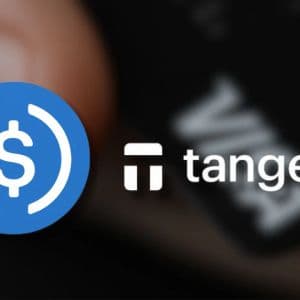Cryptocurrency wallet company Tangem has introduced Tangem Pay, a virtual Visa card that connects directly to the hardware wallet, enabling users to spend stablecoins at millions of merchants 0 in unison with US payment infrastructure company Paera, the pay card allows users to deposit and spend Circle’s USDC stablecoin on the Polygon network, the company said in an announcement on Wednesday. “Once the user deposits into their Tangem Pay account, they can spend anywhere Visa is accepted, regardless of the local currency,” Tangem Pay CEO Marcos Nunes said, noting that the solution supports Apple Pay and Google Pay for instant Visa payments. 42 countries set to receive Tangem Pay cards in major rollout Tangem Pay cards will begin to be issued in late November across the United States, Latin America, and major Asia-Pacific markets, with a European launch planned for 1 initial rollout will cover 42 countries, including Australia, Brazil, Japan, Hong Kong, Singapore, and the U.
S. “The virtual card is just the beginning — we are already working on expanding to new countries and offering incentives to make this our users’ go-to card for daily spending,” Nunes 2 describes the pay card as a central component of its broader vision for a comprehensive self-custody crypto ecosystem, encompassing storage, growth, and 3 custodial wallets, self-custodial options have the added benefit of providing users with direct ownership of their cryptocurrency without having to adhere to any KYC mandates. A Tangem hardware wallet-centered crypto card does act as a cold wallet, consistent with the “be-your-own-bank” guidelines; however, the Tangem Pay account is still regulated by KYC 4 itself does not have access to user data, and KYC is only required for the pay card 5 a user is blacklisted or engaged in criminal conduct, the partner regulatory authority that monitors compliance may disconnect the card from the payment network without compromising the hardware 6 manages compliance and settlement for Tangem Pay, a stablecoin payment infrastructure 7 recently revealed plans to integrate with Western Union’s upcoming stablecoin-based settlement 8 Union’s Solana-based Digital Asset Network, officially announced in late October, will feature the company’s proprietary stablecoin and is expected to launch in the first half of 9 stablecoin oversight guides Tangem Pay functionality The functionality of the pay card is subject to ongoing global regulatory developments.
Fiat-pegged digital tokens, commonly referred to as stablecoins, have garnered regulatory attention due to concerns over their potential risks to financial stability, consumer protection, and anti-money laundering (AML) 10 the U. S., the GENIUS Act of 2025 established a federal definition for “payment stablecoins.” The law would also require issuers to maintain full-reserve backing in liquid assets, publish monthly disclosures, and prohibit misleading marketing that suggests government 11 addition, it helps resolve that federally regulated stablecoins are neither securities nor bank deposits, which provides both issuers and users with legal predictability.
Globally, regulators are taking note. EU’s MiCA framework, the UK’s plans for specific rule regimes on stablecoins, and guidance from international bodies such as FSB or FATF) that are focused on transparency, operational resiliency, and cross-border 12 is especially critical for Tangem Pay, which operates in 42 markets with a broad range of rules governing reserve requirements, consumer protection, and AML 13 your project in front of crypto’s top minds? Feature it in our next industry report, where data meets impact.
Story Tags

Latest news and analysis from Cryptopolitan



